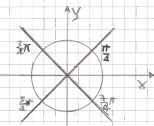Cube Root Unity Complex Fuctions
Author: Renzo Diomedi
e_mail : rnzxyz@outlook.it

Well known  with k and n natural numbers, is a root of unity with value = 1
and if n=3 is a cube root of unity , a complex number that creates an equilateral Triangle
(since
with k and n natural numbers, is a root of unity with value = 1
and if n=3 is a cube root of unity , a complex number that creates an equilateral Triangle
(since  ), hence a Hexagon. So well known
), hence a Hexagon. So well known  ,
, 
Unlike the hexagonal lattice created by the Eisenstein number, the points (or vectors) of this Lattice are not all algebraic entities.
It has 3 orthogonal axes: x , y , z and 6 non-orthogonal axes which are  oblique :
oblique :  ,
,  ,
,  ,
,
 ,
,  ,
, 
if x = y = z they are in a Sphere that contains 3 crisscross regular hexagones
then the coordinates liying on these 9 space-dimensions are 8 : 0,5x ; -0,5x ; 0,866025y ; -0,866025y ; 0,5y ; -0,5y ; 0,866025z ; -0,866025z
and their resulting points are 16 that, joining the external points, create a cuboid volume
If x  y
y  z the coordinates liying on these 9 space-dimensions , considering
z the coordinates liying on these 9 space-dimensions , considering 
 are 10 :
x-0,5y ; -x+0,5y ; x-0,5z ; -x+0,5z ; 0,866025y ; -0,866025y ; y-0,5z ; -y+0,5z ; 0,866025z ; -0,866025z
and their resulting points are 32 that, joining the external points, create a 14-sided polyhedron that contains
2 orthogonally crossed irregular identical hexagones
around the Z axis
are 10 :
x-0,5y ; -x+0,5y ; x-0,5z ; -x+0,5z ; 0,866025y ; -0,866025y ; y-0,5z ; -y+0,5z ; 0,866025z ; -0,866025z
and their resulting points are 32 that, joining the external points, create a 14-sided polyhedron that contains
2 orthogonally crossed irregular identical hexagones
around the Z axis

the Output of this function is a closed and compact space around the point of origin of the axes. It is a large point that replaces
the ordinary single minimal point. This volume is modified by the Time, that here is the 10th Dimension, using a D'Alembert operator
extended on all 9 axes, thus  where
where  is
a 3D conjugate
is
a 3D conjugate  with
with  .
Vectors move form every of 16 or 32 points in directions of its new position. Time to time from older to next positionof the points and so on.
.
Vectors move form every of 16 or 32 points in directions of its new position. Time to time from older to next positionof the points and so on.
the spacetime deformation of the 14-sided Polyhedron measures...........
..............................to be continued

 with k and n natural numbers, is a root of unity with value = 1
and if n=3 is a cube root of unity , a complex number that creates an equilateral Triangle
(since
with k and n natural numbers, is a root of unity with value = 1
and if n=3 is a cube root of unity , a complex number that creates an equilateral Triangle
(since  ), hence a Hexagon. So well known
), hence a Hexagon. So well known  ,
, 
 oblique :
oblique :  ,
,  ,
,  ,
,
 ,
,  ,
, 
 y
y  z the coordinates liying on these 9 space-dimensions , considering
z the coordinates liying on these 9 space-dimensions , considering 
 are 10 :
x-0,5y ; -x+0,5y ; x-0,5z ; -x+0,5z ; 0,866025y ; -0,866025y ; y-0,5z ; -y+0,5z ; 0,866025z ; -0,866025z
and their resulting points are 32 that, joining the external points, create a 14-sided polyhedron that contains
2 orthogonally crossed irregular identical hexagones
around the Z axis
are 10 :
x-0,5y ; -x+0,5y ; x-0,5z ; -x+0,5z ; 0,866025y ; -0,866025y ; y-0,5z ; -y+0,5z ; 0,866025z ; -0,866025z
and their resulting points are 32 that, joining the external points, create a 14-sided polyhedron that contains
2 orthogonally crossed irregular identical hexagones
around the Z axis

 where
where  is
a 3D conjugate
is
a 3D conjugate  with
with  .
Vectors move form every of 16 or 32 points in directions of its new position. Time to time from older to next positionof the points and so on.
.
Vectors move form every of 16 or 32 points in directions of its new position. Time to time from older to next positionof the points and so on.